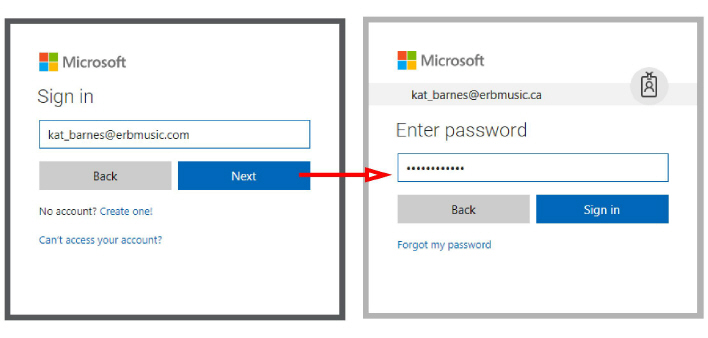
Office 365 Integration with Microsoft Graph
Depending upon your site’s requirements and software, you have the option to integrate Avaya Messaging with several email systems. None of these are required. Where appropriate, refer to the chapter that best suites your requirements.
|
Chapter |
Integration |
Why you want it |
|---|---|---|
|
|
Creates a secure connection through OAuth2 to your Gmail and Google Apps accounts. |
|
|
Exchange using EWS |
The simplest connection between your Exchange server and IXM. |
|
|
Exchange without EWS |
A connection between Exchange and IXM for legacy systems. |
|
|
Exchange 2010 |
A connection between Exchange 2010 and IXM. |
|
|
Office 365 using Graph |
Setup the latest high security integration procedures for maximum data integrity. |
|
|
Office 365 using EWS |
Quick connection between your O365 server and IXM. |
This configuration note describes the implementation of unified messaging between Office 365 and Avaya’s Messaging using Microsoft Graph as an alternative for Microsoft’s Exchange Web Services.
|
Warning: The instructions found in this guide cannot be guaranteed to work for all installations since each site is unique. Some problems may arise even if you follow these instructions precisely. Therefore, use this document as a reference for your own configuration, making the changes appropriate to your site's specific requirements. |
|
Note: This document describes the standard configuration for the integration of Avaya Messaging with Microsoft Office 365. For a high security connection, such as for sites requiring JITC compliance, please contact your vendor to purchase Professional Services support. |
The following preliminary steps must be completed before the integration can begin:
•The Office 365 domain has been setup and deployed (requires Mid-size Business and Enterprise plan minimum, E1 or E3).
•You must have administrative access to the Office 365 domain.
•Messaging Server installed and running (refer to Avaya’s documentation web site).
Connecting Through Microsoft Graph
As an option, Messaging can be connected to Office 365 using Microsoft Graph. This adds an additional layer of security to your communication traffic flows.
|
Warning: This section contains advanced concepts and programming steps that could adversely affect operations if handled incorrectly. Read through these instruction thoroughly before proceeding. If you are not confident to follow these instructions adequately, do not continue. |
1.Open a web browser and go to the Office 365 site at https://www.office.com.
Click Sign in and login using your Office 365 administrator account credentials.

2.Click Admin.
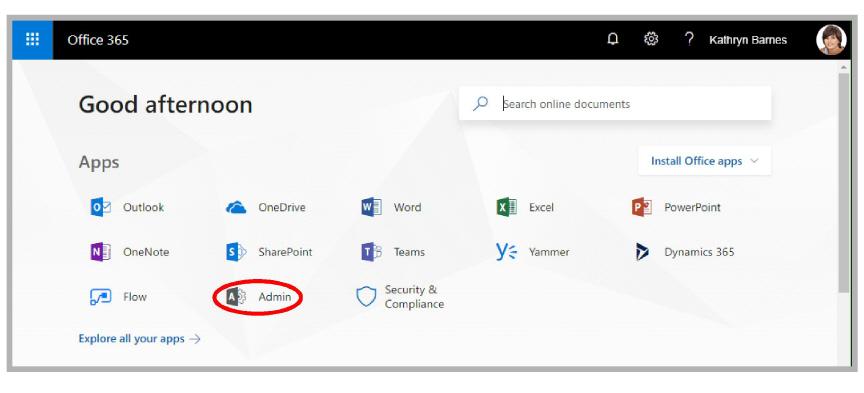
3.In the left-hand panel (Show All), under Admin centers, select Azure Active Directory. The Azure dashboard will appear.
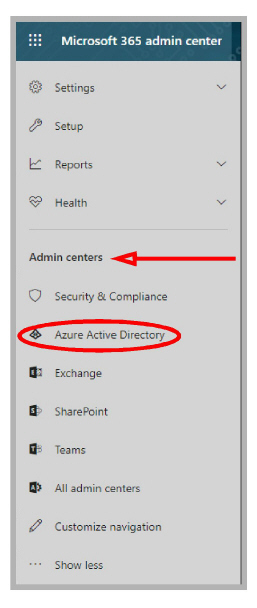
4.Open Azure Active Directory and select App registrations.
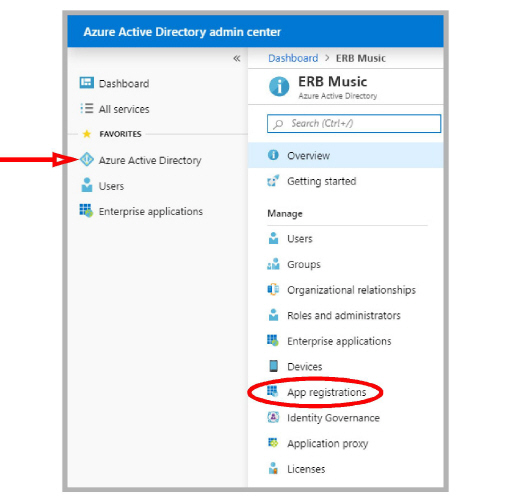
5.Click New registration.
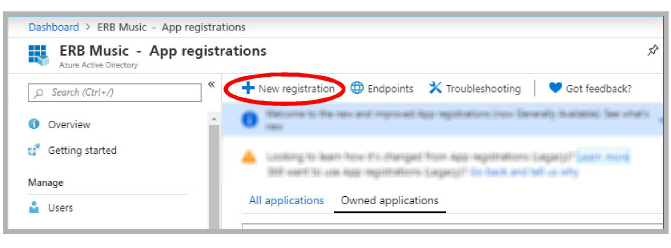
6.Provide a name for the registration. Enable Accounts in this organizational directory only. A redirect URI is not required. Click Register.
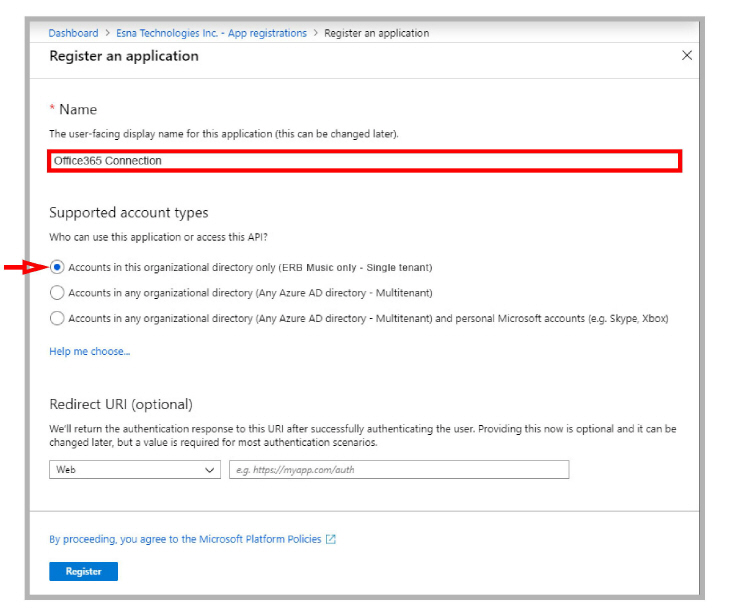
7.Record the value for Application (client) ID. This will become part of the username when configuring Feature Group access within Messaging.
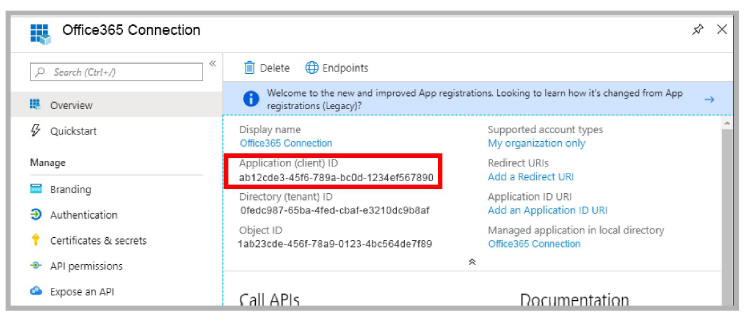
8.To configure the permissions for the application, click API permissions > Add a permission.
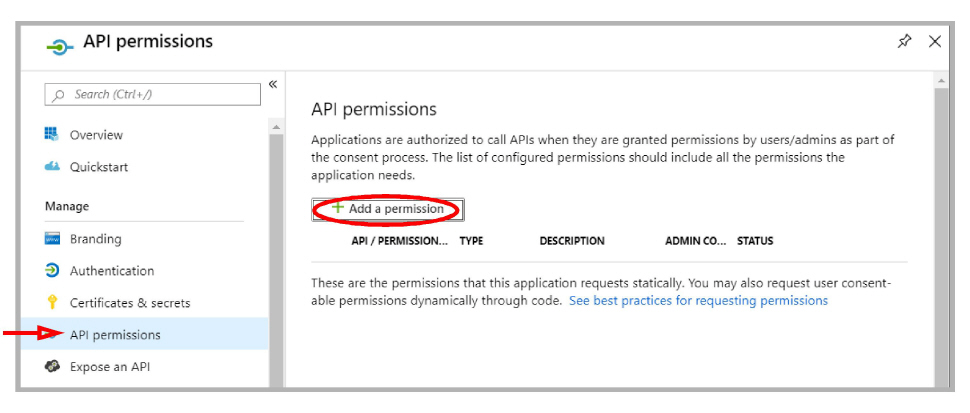
9.Under Microsft APIs, select Microsoft Graph.
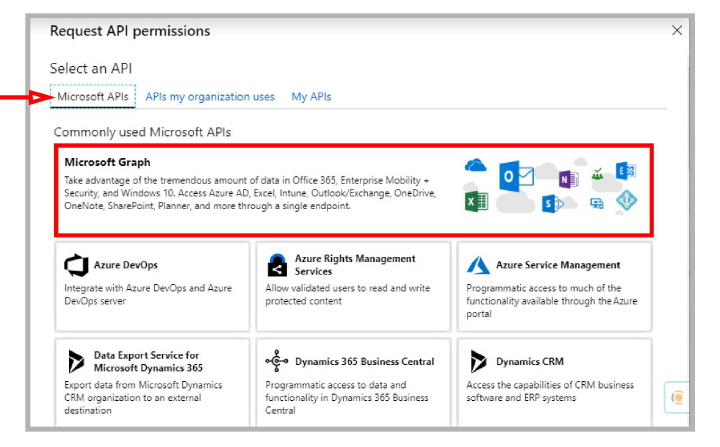
10.Choose Application permissions.
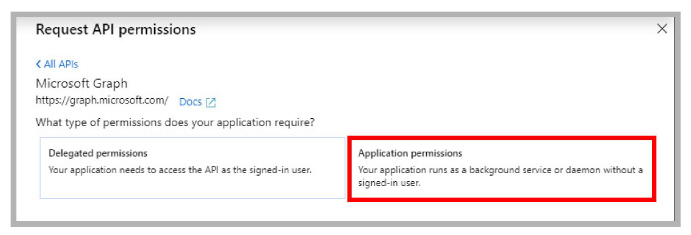
11.Under Application Permissions, enable:
•Calendars.ReadWrite
•Contacts.ReadWrite
•Mail.Read
•Mail.ReadWrite
•Mail.Send
Click Add permissions.
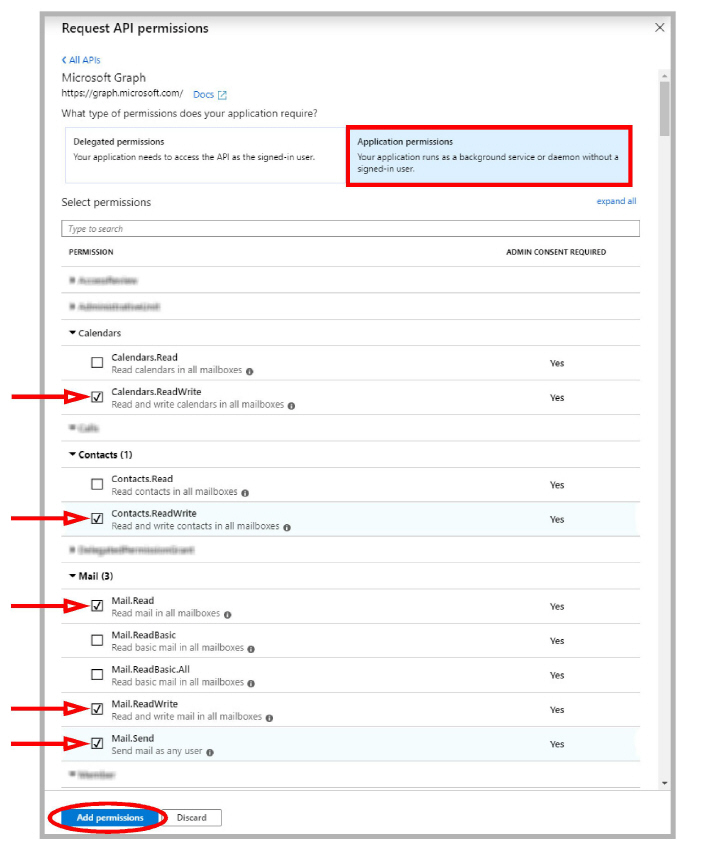
|
Note: The permissions that are required are based upon each site’s requirements. For example, if Calendar or Contact synchronization is not necessary, then those permissions can be left out. |
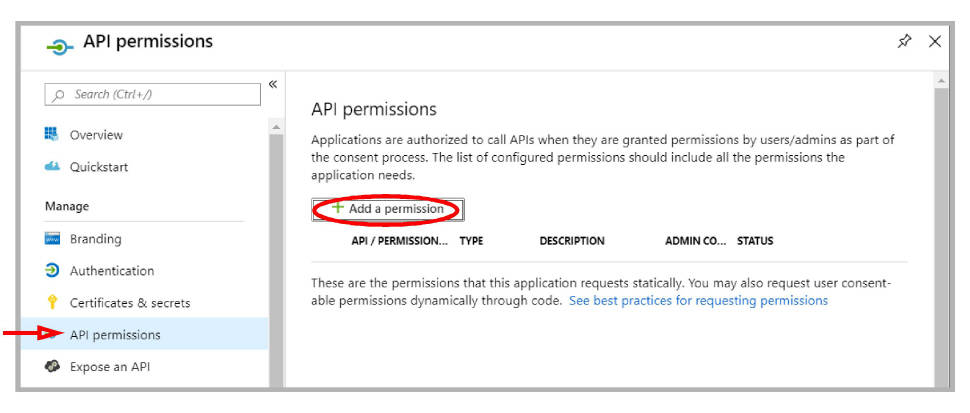
13.Under Microsft APIs, scroll down and select Azure Active Directory Graph.
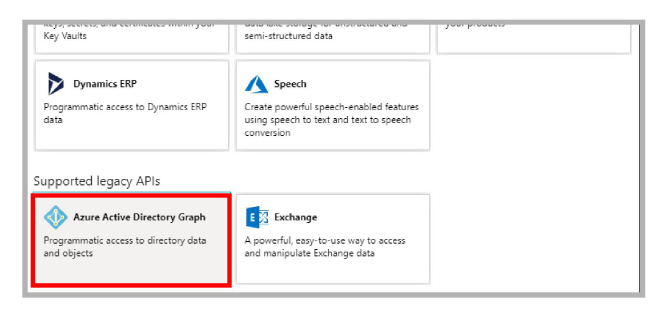
14.Choose Delegated permissions.
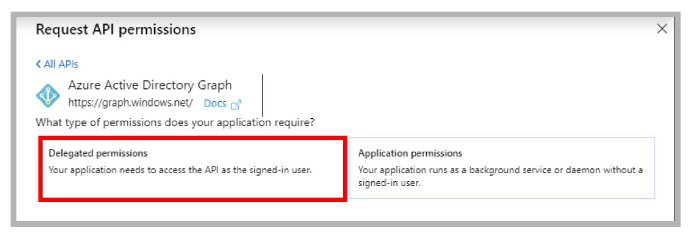
15.Under Delegated permissions, enable:
•User.Read
Click Add permissions.
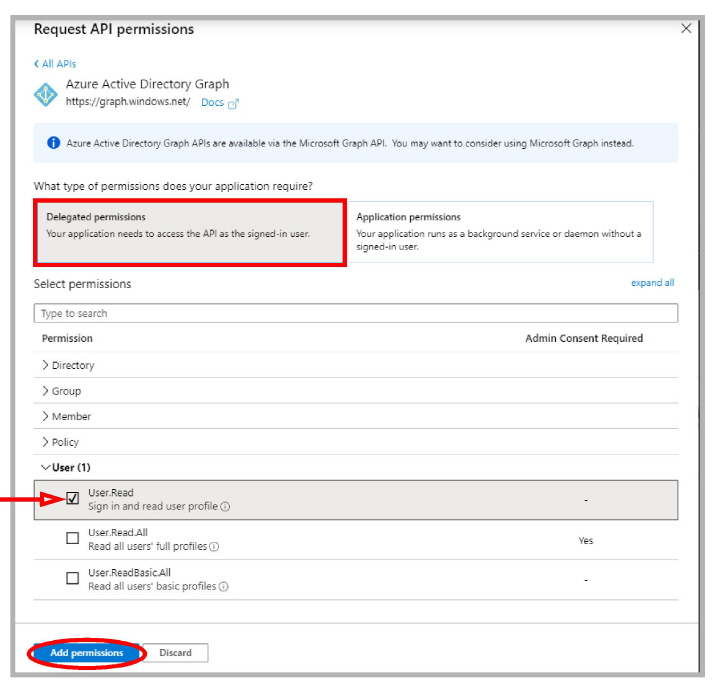
16.Wait 10 seconds, then click Grant admin consent for... . When prompted to confirm consent, click Yes.
If prompted to sign-in, provide the username and password.
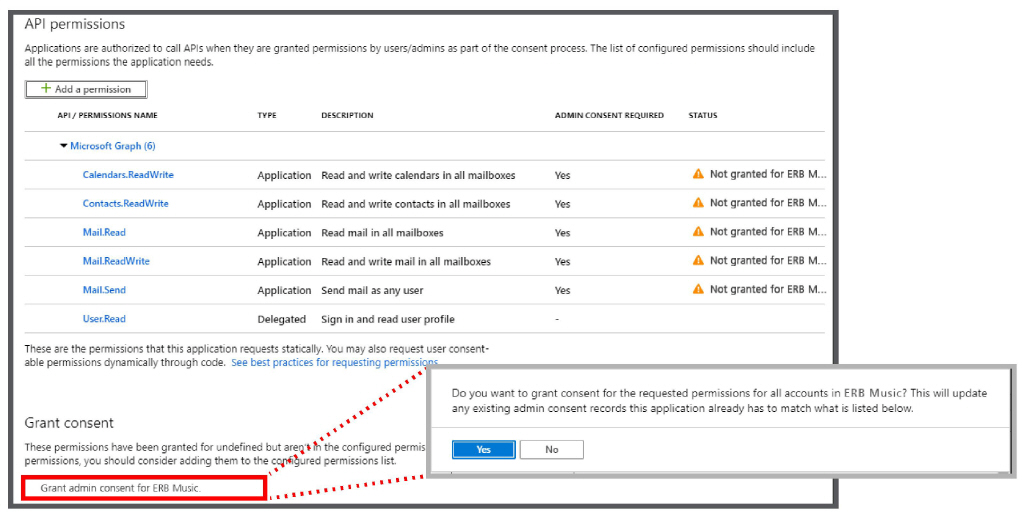
17.Ensure that all of the Status indicators are green for the permissions you just added. If not, delete them and start again.

18.Open Certificates & secrets and select New client secret.
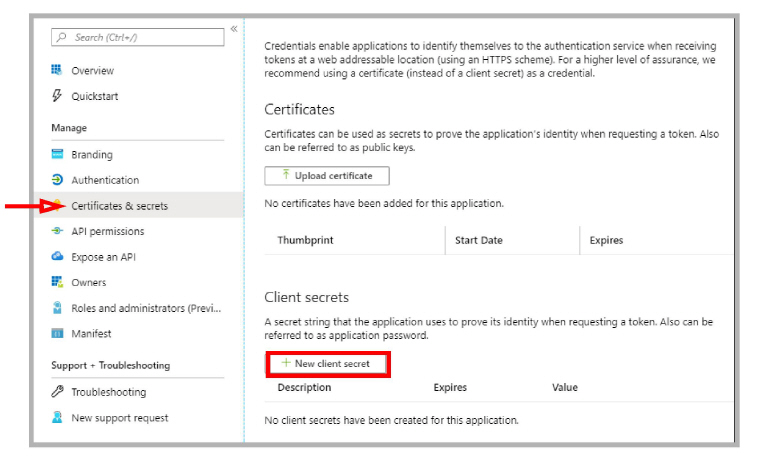
19.Give the Secret a meaningful description. Choose when the Secret should expire (1 year, 2 years, or never).
When ready, click Add.
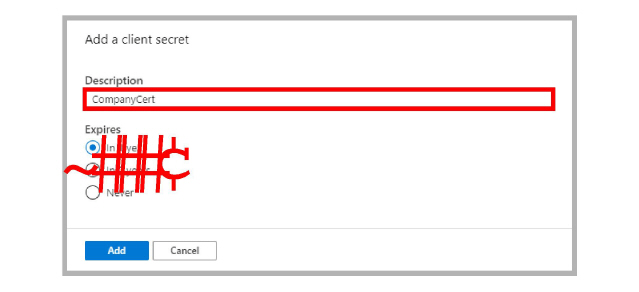
|
Important: Once a Secret expires, synchronization will no longer function until a new Secret is created. |
20.Record the Value associated with the Secret. This is the password required when configuring the Feature Group in Messaging.

21.In Messaging Admin, add a new TSE IMAP server, and include the Office 365 server information.
IMAP Server Name: Enter a name for this connection (e.g. OfficeMail365).
IMAP Server Address: Type in ews:outlook.office365.com.
IMAP Server Port: Set to 993 to enable SSL connectivity.
Voice Format: Select MPEG-1 Audio Layer 3 (MP3) for client playback.
Click OK when ready.
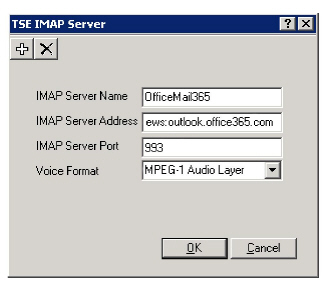
22.Go to the Feature Group > Synchronization Options tab.
Under IMAP Settings, configure:
•IMAP Account: Enter your corporate Office 365 domain name, a forward slash, then the Application (client) ID recorded in step 7.
(e.g. yourcompany.com/ab12cde3-45f6-789a-bc0d-1234ef567890).
•Account / Confirm Password: Enter the Client Secret Value recorded in step 20.
(e.g. :]Ab=c1dEfGhijKlmno?pQRS2tUv3WX4)
•IMAP Server: From the dropdown menu, select Office 365.
•Synchronization Settings: Enable all of the items that you want to have synchronized between servers.
•Calendar Mode: If calendar synchronization is required, select Sync with Mail Server Calendar from the dropdown menu. Otherwise, select None.

|
Note: The settings for the Office 365 connection through Graph can only be made to Feature Groups. These settings cannot be made at the mailbox level. |
The configuration is complete.
Reconfiguring Synchronization Components for Graph
Once the installation has been completed, modify the system configuration files to use EWS instead of IMAP. This should be done on all servers running CSE: The voice server in a single server environment, the Consolidated server under HA, and all remote CSE servers operating.
|
Note: The CSE.exe.config file is used with message synchronization, while the CSE.PIM.exe.config is used for contact and calendar synchronization. |
1.Open the UC/UCCSE folder on the program installation drive.
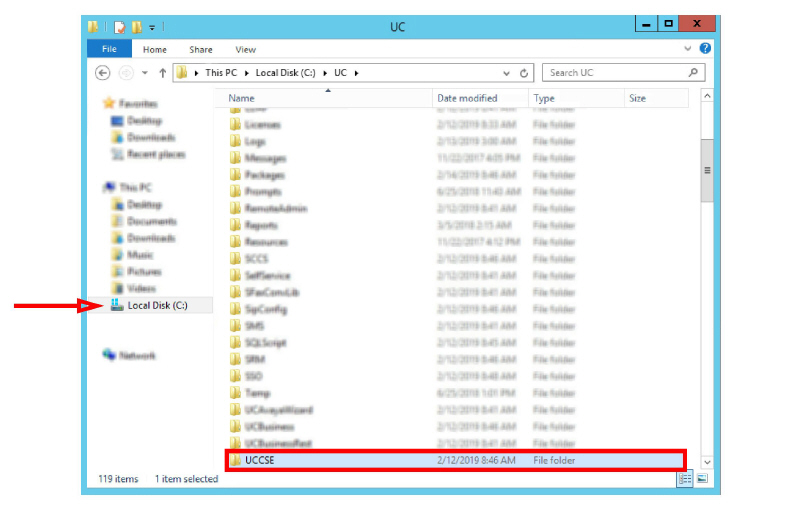
2.Within the folder, open the CSE.exe.config file in a text editor such as NotePad.
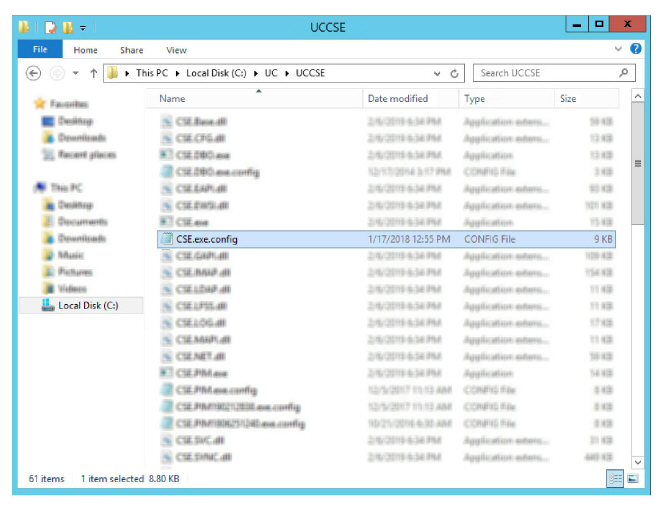

3.Scroll down to find the following lines (UseEWSGraph):
<setting name=”UseEWSGraph” serializeAs=“String”>
<value>False</value>
</setting>

Verify that the Value is set to True. If the value is not True, change it and save the file.
<setting name=”UseEWSGraph” serializeAs=“String”>
<value>True</value>
</setting>
4.Within the UCCSE folder, open the CSE.PIM.exe.config file in a text editor such as NotePad.
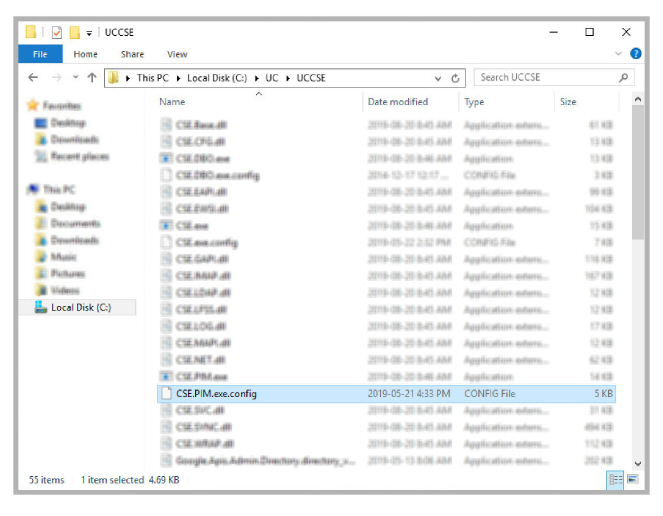

5.Scroll down to find the following lines (UseEWSGraph):
<setting name=”UseEWSGraph” serializeAs=“String”>
<value>False</value>
</setting>

Verify that the Value is set to True. If the value is not True, change it and save the file.
<setting name=”UseEWSGraph” serializeAs=“String”>
<value>True</value>
Before continuing, stop and restart the following services:
•UC Content Synchronization Engine
•UC CSE PIM Synchronization Engine
This will force Avaya Messaging to immediately update its systems. Otherwise, there will be a delay before the changes become active.
Note After Upgrading or Updating
Whenever Avaya Messaging is updated from an earlier version, it is important to check the settings configured above. During the update, these values will be overwritten with the default program settings.
Repeat the steps given above to configure the software for use with MS Graph.